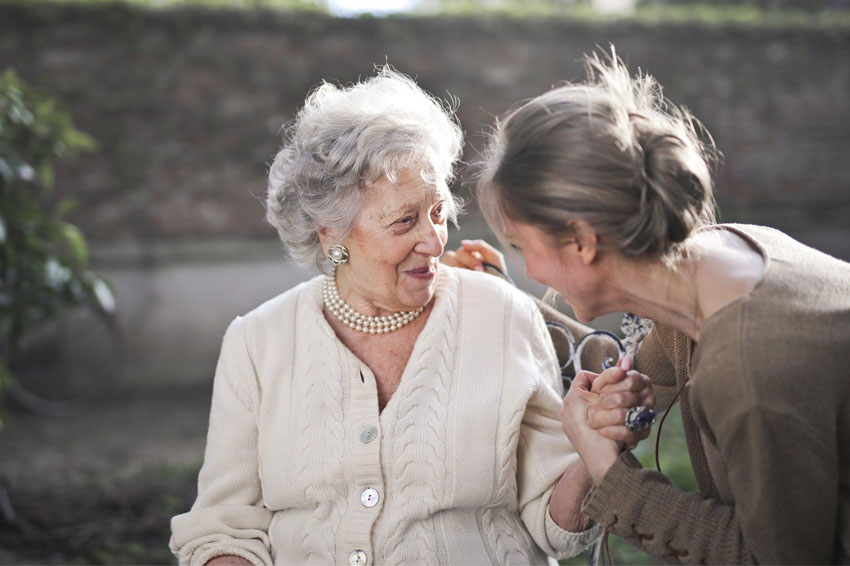Nursing homes serve a noble purpose, and for the older population, they serve as a comfortable and peaceful retreat. Everyone wants a quiet retirement free from responsibilities. This is why senior citizens turn to older homes for refuge.
More than 40% of nursing home patients are over 85. However, despite their popularity, these facilities are not free from challenges. Some highlight the neglect, mismanagement, and abuse in these establishments. As you visit a loved one in these institutes, you must pay attention to the environment.
Here are some factors you can address and ways you can help in overcoming them:
Poor Skin Condition
Older people have fragile skin, which happens with age and due to slow bodily functions. However, the lack of elasticity and suppleness makes them more prone to injuries and bed sores. When senior residents have to move around the facility, they mostly need help.
While some use wheelchairs, others need a nursing aid to help them walk. The staff’s tight grip on their shoulders, arms, and hands can leave visible marks that can bloom into bruises. Additionally, the increased pressure and friction of their clothing, coupled with sitting in one place for too long, restricts circulation.
As a result of which, a bed sore can develop. These pressure ulcers occur in bony areas of the body and can get infected by oozing with pus. If you notice that your loved one has injured skin covered in sores, you must inform the staff. While bedsores in nursing homes are not uncommon, the residential team has to work actively to reduce the severity of this wound. If it goes untreated, it can become septic for the patient.
The medical staff on board can help older people look after their skin by providing them with physical therapy to get the circulation going. They can assist the patient in shifting positions every hour to prevent pressure from building and apply antibacterial ointments and lotion to keep the skin hydrated. Residents should get cushions for their wheelchairs and access to excise equipment they can use so their limbs stay in motion. Similarly, a staff member should know how much pressure to apply while gripping a patient ensuring it’s enough to keep them steady but not hurt them.
Below Standard Food
Nursing homes are on a budget. The amount they have is not enough to invest in nutritious food. As a result, most residents get cold, mushy, and hard-to-swallow meals. Some of these dishes don’t account for severe allergies like gluten and nuts, which can often be life-threatening. Seniors must get a well-balanced diet.
To solve this food crisis, you will need the support of the local community. Talk to people who have a loved one in the nursing home and try a donation drive. You can also encourage the administration to start a Gofundme or speak to policymakers to increase the budget. It would help to remind them that baby boomers account for 20% of the population, and so they deserve access to government funds.
If you can find links to receipts or websites that make fast yet cost-friendly meals try talking to the staff about it. Similarly, talk to food drives and charity drives willing to supplement diets. You can also hold annual bake sales or potlucks to treat the residents.
Understaffed Facilities
Staffing is a massive issue in the healthcare sector. There are not enough members from hospitals to nursing homes to help elderly residents. While you can’t resolve the staffing issue on your own, make it a point to attend nursing home meetings and discuss the problem with a lack of available help.
Suggest voluntary programs and advise the administration to allow more nurses to apply to resident homes. Retired nurses can help with paperwork, meal preparation, cleaning, and management, while younger ones can work directly with the patients. You may also pitch in on keeping bonuses and salary increases to encourage more potential elderly nurses to apply.
Inadequately Trained Workers
Nursing home abuse is not uncommon, but it has to stop. Some of these incidents occur because of frustration and lack of patience on the staff’s part. This is why before hiring a worker, residential facilities must look into training them.
You may suggest educational methods like teaching nursing members empathy and compassion while walking them through the slowed-down cognitive functions of elderly residents.
The training protocol should consist of using kinder language, and not disturbing the patient if they’re sleeping unless needed. And using automatic monitors like heart rate readings to ensure that the patient is doing well.
You can also advise the administration to invest in technology to assist the medical staff as they do their work. These include electronic wheelchairs, automatic IV drips, and smart patient beds.
The staff should also know the hygiene standards to maintain, identify when a patient is injured and how to administer primary care and rush them to the emergency room for severe diseases. Ask a doctor to step in and walk the medical staff through geriatric care if you cannot make your voice heard.
Final Thoughts
As you shift a loved one to an elderly home, you want them to be cared for and loved. Yet, despite your sound intentions, not every residential home can provide adequate care to your relatives. However, you cannot ignore these issues and need to highlight them. If you see neglect happening, talk to the staff about it and actively play your part to help make a change.
In the case of bed, sores guide the team on what they can do to treat them and how to handle a patient gently. If the meals are not nutritious enough, figure out ways in the form of charity runs and donations to give the nursing homes more ingredients and cash to purchase better items. The lack of adequate staffing can disrupt care. Senior patients need proper treatment from staff members.
Therefore, ensuring that the facility takes time to train and educate the staff can make a difference in the care they provide.
Thumbnail Credit: Pexels
This article is published by our independent team of health and wellness pundits that publish original and informative content to empower readers to take charge of their health and embark on a physically, mentally, and emotionally balanced lifestyle.







































Leave a Reply